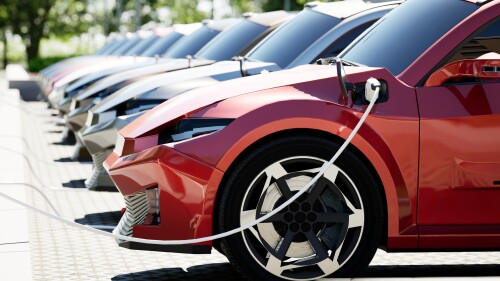WASHINGTON — The rapid adoption of EVs across the U.S. leaves little time for fire departments to adapt. That’s the message members of a House Science Subcommittee on Investigations and Oversight took from witnesses at a hearing devoted exclusively to electric vehicles, lithium-ion batteries and first responders.
As San Bernardino County (California) Fire Department Chief Dan Munsey urged, administrators must make training programs a top budget and planning priority in part because standard training does not cover the unique risks of Li-ion battery fires in EVs. Munsey reported that every one of his 2,500 firefighters gets over 16 hours of instruction on electrical hazards, explosion potential, toxic exposure, fire suppression challenges, and the more unique aspects of EV fires.
Hands-on experience is essential, but the new burden will cost fire departments billions nationwide, Munsey emphasized. Clearly worried about how growing EV use will tax fire departments, Munsey added, “we are not ready as a whole” to handle the potential scale of EV-related incidents.
Currently no data demonstrates whether standard firefighter gear adequately protects against toxic Li-ion battery smoke and fumes, creating dangerous unknowns from more well-known carcinogens and potential lung damage that pose major cancer risks. As UL Research Institutes Vice President Dr. Judy Jeevarajan testified, new materials research is vital, but departments must still implement extensive gear decontamination after any battery fire response.
A few more pointers for first-due arrivals emerged from the testimony:
- Approach from upwind to avoid inhaling emissions;
- Use thermal imaging cameras to identify invisible hot spots;
- Employ lots of water; flooding batteries is often the only way to extinguish and cool them; and
- Carefully consider letting a battery burn itself.
While the issue is newer to Congress, a 2020 National Transportation Safety Board report found a direct risk of electric shock in a discussion of thermal runaway and reignition. The NTSB then issued recommendations in January 2021 ranging from vehicle ratings to research to, perhaps most importantly, getting manufacturers to issue emergency response guidance.
Another subcommittee received written testimony two years ago from the IAFC for a hearing more about automated/autonomous vehicles wherein then-IAFC President and Board Chair Kenneth Stuebing called for automatic engine shut-off, informing agencies of fleet deployments such as buses or trucks, special protocols and training for HAZMAT shipment, and that “AV manufacturers should also be required to dialogue with first responders on their interactions with AVs and develop emergency response guidance for first responders to address the unique response challenges AVs may present, especially when there are lithium-ion batteries involved.”
Chairman Jay Obernolte (R-Calif.) was specifically interested in standardized markings to identify battery locations and other details, similar to how airplanes mark emergency exits or airport-adjacent departments retain reference materials about airplanes. Jeevarajan indicated current work on a standard (SAE J 3108) that will include symbols on registration plates to indicate the type of vehicle, whether gasoline, electric, battery electric (BEV) or plug-in hybrid electric (PHEV). This standardization will help first responders quickly identify the type of vehicle involved to craft the most appropriate response.
Obernolte noted that while there are only 3.1 million EVs in operation today, auto industry experts anticipate nearly 130 million EVs on the road by 2030.






